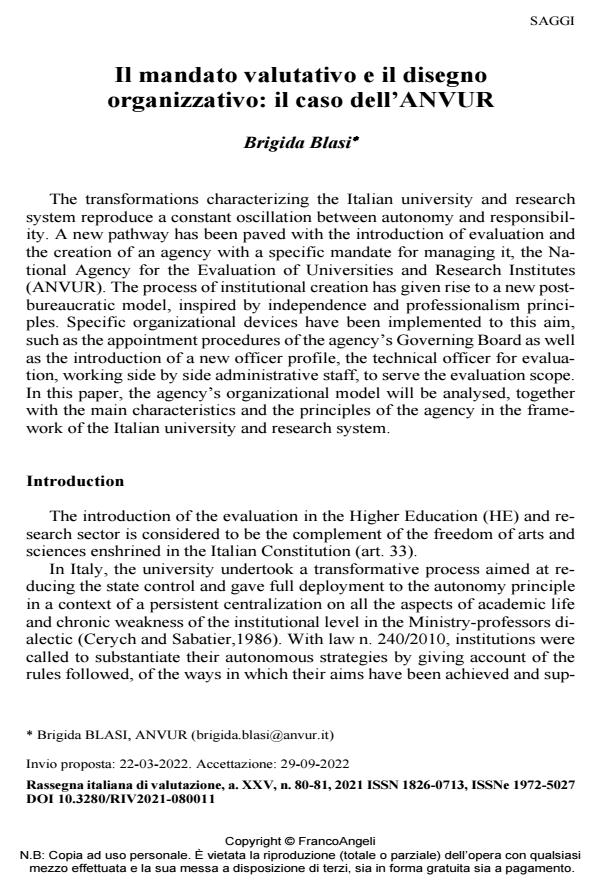Il mandato valutativo e il disegno organizzativo: il caso dell’ANVUR
Journal title RIV Rassegna Italiana di Valutazione
Author/s Brigida Blasi
Publishing Year 2022 Issue 2021/80-81
Language Italian Pages 21 P. 208-228 File size 281 KB
DOI 10.3280/RIV2021-080011
DOI is like a bar code for intellectual property: to have more infomation
click here
Below, you can see the article first page
If you want to buy this article in PDF format, you can do it, following the instructions to buy download credits

FrancoAngeli is member of Publishers International Linking Association, Inc (PILA), a not-for-profit association which run the CrossRef service enabling links to and from online scholarly content.
Brigida Blasi, Il mandato valutativo e il disegno organizzativo: il caso dell’ANVUR in "RIV Rassegna Italiana di Valutazione" 80-81/2021, pp 208-228, DOI: 10.3280/RIV2021-080011